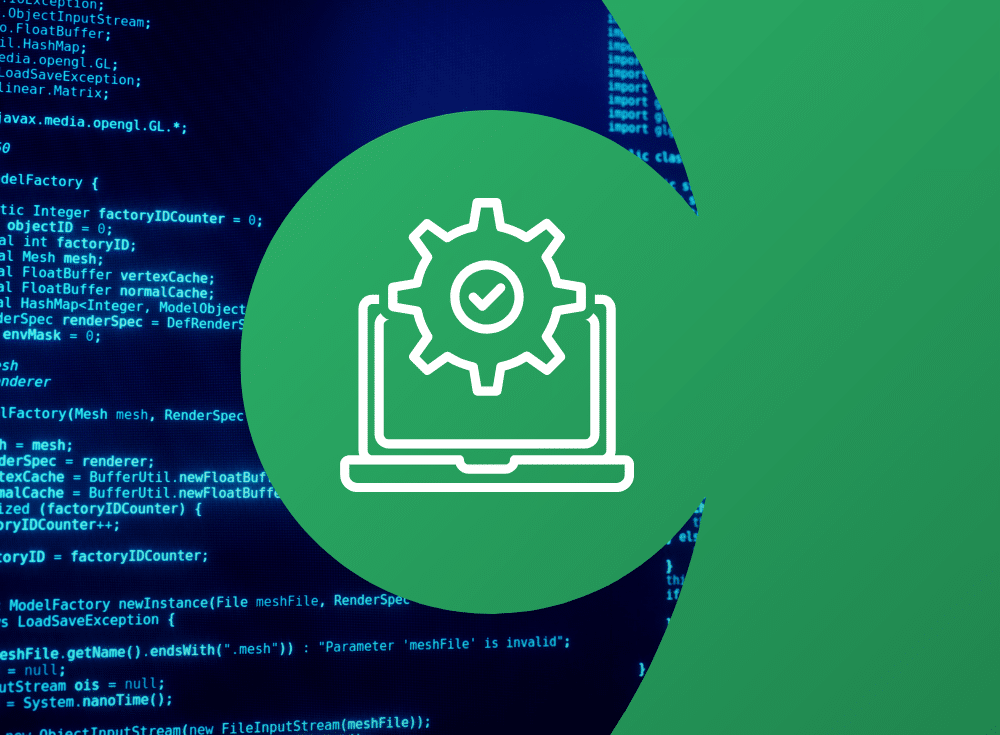SRE vs. DevOps? Why your organization needs both

Organizations might think that they must evaluate SRE against DevOps, but it’s actually more beneficial to use both to support developers.

On: May 8, 2024
Paige Cruz is a Senior Developer Advocate at Chronosphere passionate about cultivating sustainable on-call practices and bringing folks their aha moment with observability. She started as a software engineer at New Relic before switching to Site Reliability Engineering holding the pager for InVision, Lightstep, and Weedmaps. Off-the-clock you can find her spinning yarn, swooning over alpacas, or watching trash TV on Bravo.
Many organizations may compare SRE to DevOps, but the reality is utilizing both offers the most developer support.
In the cloud native and digital computing conversation, two terms are often highlighted: site reliability engineering (SRE) and DevOps. Sometimes these are viewed as competing strategies: SRE vs. DevOps. However, this perception is incorrect.
For organizations to flourish in the world of cloud native technology, it’s essential to integrate both DevOps and SRE. Additionally, a platform engineering team becomes a third critical element to ensure successful transformation as enterprises transition to cloud native environments.
Grasping the definitions, differences, roles, and business advantages of each is vital, along with recognizing why the integration of all three is necessary for organizational success.
What is DevOps?
DevOps represents more than a software development methodology, it’s an IT culture. It merges software development with IT operations to enhance the delivery of services and software, aiming for more efficient building processes where automation plays an important role in enabling quicker deployments of superior-quality software. The primary goal is to simplify system modifications and focus on continuous enhancements rather than extensive one-off upgrades.
The cultural shift in DevOps arises from its focus on improving collaboration and communication among various teams. Developers, operations personnel, quality assurance (QA) professionals, and security experts collaborate using automated tools to accelerate and standardize the development cycle. This collaboration extends to employing (continuous integration/continuous delivery) CI/CD methodologies for testing, integrating, and deploying software updates swiftly and reliably.
What issues does DevOps address?
Challenges of traditional development practices
Legacy software development methods like the waterfall approach are notoriously slow and often generate discord between development and operations groups. Before the adoption of DevOps, development teams might start new projects even before operations had finished QA and security checks, leading to a lack of cooperation and a culture of blame. This resulted in frustrations among business clients eager to see applications in production.
Software testing
DevOps also solves the testing issues that pop up in traditional testing environments. In conventional development settings, the absence of thorough testing means bugs may remain unnoticed, causing critical downtime, user dissatisfaction, and potential revenue loss. Through early implementation of testing with CI/CD, DevOps avoids the last-minute scramble to deploy applications.
Security
Furthermore, security represents a significant challenge that DevOps tackles by integrating continuous security checks throughout the development process to preemptively identify and mitigate vulnerabilities
Advantages of DevOps
Some benefits of adopting a DevOps culture include:
- Faster time to market: By streamlining the development process and eliminating bottlenecks, DevOps helps organizations launch new products and features faster than before.
- Enhanced collaboration: Reduces organizational silos and fosters better communication across teams.
- Superior quality: Automation of testing and deployment helps minimize errors and boost software quality.
- Improved efficiency: Automation reduces repetitive tasks and minimizes the need for manual intervention.
- Scalability:DevOps frameworks support the development of software that can grow with the business needs without performance loss.
What is SRE?
Site Reliability Engineering (SRE) is a discipline that applies principles of software engineering to resolve operational issues, aiming to create and maintain scalable and highly reliable software systems. Originating at Google, SRE has since become a standard practice across the tech industry.
A fundamental belief in SRE is that every failure presents a learning opportunity, leading to proactive system-wide improvements to prevent recurrence of the same issues.
What problems does SRE solve?
Reducing downtime
Primarily, SRE aims to minimize system failures and downtime by quickly identifying and resolving problems. Through thorough proactive investigation and analysis, SRE teams enhance the DevOps capability to design and adjust systems for high availability and resilience.
System performance
SRE also enhances system performance, ensuring that software meets both internal and external user expectations. Monitoring usage patterns and capacity is crucial for SRE teams to manage expected traffic loads and prevent system overloads and disruptions.
Collaboration in issue resolution
Collaboration is key between SRE and DevOps teams, ensuring issues are resolved thoroughly with continuous feedback loops to fix underlying problems permanently.
The advantages of SRE
Beyond improving systems reliability – its primary objective – SRE teams help design operable systems that are less likely to fail or experience unplanned downtime. SRE promotes:
- Quicker incident remediation: SRE’s data-driven approach to identifying issues allows for quick resolution, reducing the duration of detecting and resolving incidents.
- Optimal resource use: Efficient management of resources ensures scalability without excessive cost.
- Enhanced collaboration: Collaboration with development teams from the outset ensures reliability is a core component of software design.
- More automation: SRE teams use automation to minimize human error and enhance efficiency, freeing up time for strategic initiatives.
What is platform engineering?
Platform engineering involves creating and managing an internal software platform consisting of tools, services, and infrastructure, that empowers developers to build, deploy, operate, and monitor applications more effectively. Platform engineers’ purpose is to allow developers to concentrate on coding rather than on infrastructure complexities.
Platform engineering teams often establish “golden paths” — standardized, supported development routes that maximize reliability, quality, and productivity. When developers follow these paths, the platform engineering team handles production, simplifying the learning curve for underlying technologies and significantly speeding up market delivery.
Platform engineering teams also monitor the efficiency of developers throughout the software development lifecycle, from coding to deployment, ensuring developers have the necessary tools and support to deliver top-quality software.
What problems does platform engineering solve?
High cost of non-coding activities
Platform engineering directly enhances the developer experience. A recent study revealed that DevOps teams spend an average of over 15 hours weekly on non-coding tasks, including maintaining internal tools, setting up development environments, and debugging pipelines. The financial impact of this is substantial, with U.S. businesses losing up to $61 billion annually, according to Garden.io.
Delays caused by inconsistent tools
The complexity of managing modern cloud native applications can overwhelm DevOps teams, requiring a wide range of infrastructure components and tools. Discrepancies and inconsistencies among tools chosen by different teams or developers can lead to delays and errors. To mitigate this, platform engineering teams provide a standardized toolkit and infrastructure that simplifies the application building and deployment processes.
Scalability
Furthermore, scaling applications can be challenging and time-consuming, particularly as traffic and usage evolve. Platform engineering addresses this with its golden paths; providing scalable environments and logical configurations, ensuring quick and easy scalability.
Reliability
Platform engineering also contributes to enhanced software reliability. When development teams utilize a common set of tools and infrastructure that are thoroughly tested for interoperability and designed for continuous availability, the result is more dependable software.
Developer autonomy
Furthermore, platform engineering enables developers to independently access the tools they require. Rather than navigating an IT ticketing system or discussing the setup of a new database, developers can directly launch it via a user interface, immediately configuring necessary alerts, replications, and operating parameters.
Application development costs
Lastly, platform engineering significantly reduces the costs associated with traditional application development, where development teams often acquire a wide array of overlapping tools and environments. By embracing standardization and automation, platform engineering effectively lowers these expenses.
The advantages of platform engineering
A development platform equipped with well-designed and optimized golden paths enables developers to accelerate the build and deployment of applications using ready-made components and infrastructure. This efficiency reduces the time and effort needed to construct and configure these elements from scratch. Additional benefits include:
- Standardization and consistency: Ensures uniformity across all applications developed on the platform, maintaining high quality standards.
- Scalability and flexibility: Allows developers to quickly scale applications with ease, thanks to the supportive environments provided by the platform engineering team.
- Reduced operational costs: Automates numerous deployment, monitoring, and scaling tasks, freeing up DevOps teams to focus on more strategic initiatives.
- Enhanced application reliability and availability: Offers a suite of tools and infrastructure designed for high uptime and continuous accessibility.
According to Puppet’s 2023 State of DevOps Report, platform engineering significantly enhances the probability of achieving DevOps success.
The differences between DevOps, SRE, and platform engineering
As organizations transition into the cloud native realm, they must adopt new strategies to achieve transformative outcomes; cloud native challenges require cloud native solutions.
Typically, the initial step involves embracing a DevOps culture. However, to effectively transition and operate within cloud native environments, additional support from SRE and platform engineering teams is essential.
While companies may be able to manage with fewer teams, organizations aiming to fully modernize their workloads to cloud native should consider the comprehensive approach of incorporating all three teams:
- DevOps: Manages the complete lifecycle of applications, from initial development to production and ongoing enhancements post-production.
- SRE: Concentrates on enhancing the scalability, reliability, availability, and observability of applications, often acting during times of crisis to stabilize app performance.
- Platform engineering: Although still evolving, this role is crucial for establishing standard tools and processes that facilitate DevOps transition from traditional, monolithic architectures to microservices-based, cloud native computing.
All three of these teams collaborate effectively to ensure an enterprise can deliver cloud native applications and environments that adhere to industry best practices.
How Chronosphere enhances support for DevOps, SRE, and platform engineering teams
The integration of DevOps, SRE, and platform engineering teams is essential for enhancing cloud native implementation. The trio’s effectiveness is maximized when these teams can fully observe their cloud native applications and environments. This enhanced visibility is enabled by the latest advancements in monitoring and observability technologies.
Traditional monitoring systems and application performance monitoring (APM) solutions, developed before the emergence of cloud native technology, often find it difficult to adapt to the unique demands of cloud native architectures. Chronosphere, a modern observability platform designed for today’s digital businesses, effectively unifies these critical teams.
Chronosphere enhances cloud native monitoring and observability, providing deep insights into metrics and enabling the management of resource quotas for rapidly expanding services. This grants organizations the agility and command needed to oversee the complete application lifecycle efficiently.
Additional resources
Curious to know more about Chronosphere, SRE, and DevOps? Check out the resources below:
Share This:
Table Of Contents
Most Recent:
Ready to see it in action?
Request a demo for an in depth walk through of the platform!


